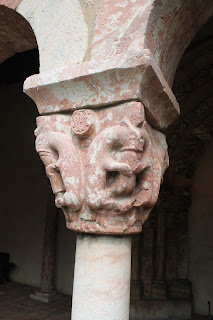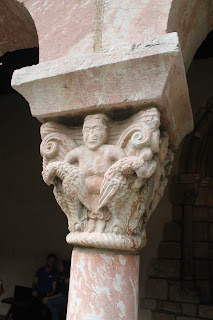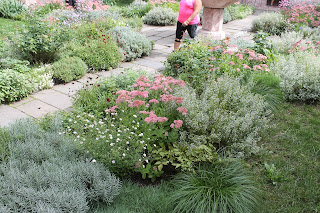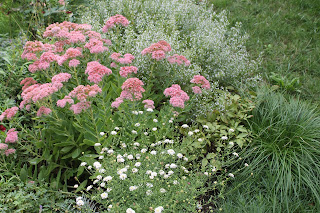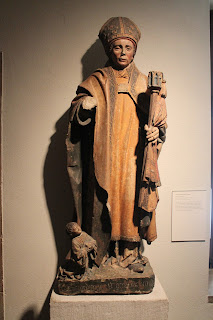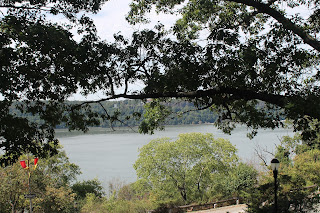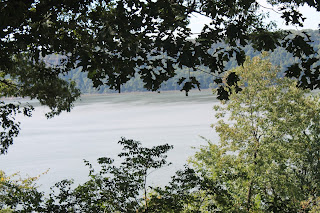The Cloisters is part of the Metropolitan Museum of Art, which has three sites in the city of New York: the first, which is the largest and best known is on Fifth Avenue, in Central Park, while the newest addition is on Madison Avenue, dedicated to contemporary art, while the third is The Cloisters, a project inaugurated in 1938, and strongly financed by John D. Rockefeller Jr., having donated land from his family estate up in Washington Heights district of Manhattan.
Several abandoned French monasteries, some in a state of ruins since the time of the French Revolution were for sale after the First World War.
These monasteries became the core of a collection centered on Medieval Art and bringing back to life in the United States a Museum dedicated to narrating the art and life of Romanesque and Gothic Monasteries, of which Cluny was the most significant model.
Lion from a room above the Chapter House of the
Monastery of San Pedro de Arlanza, Burgos,
Castille-Leon, Spain
Here is the vault of the chapel that was formerly
at Notre Dame du Bourg, at Langon, near Bordeaux
Chapel of Notre Dame du Bourg
Capitals at the top of the pillars
Possibly an effigy of Queen
Eleanor of Aquitaine

Three windows offer light for
the altar of the Chapel of
Notre Dame
Altar with Crucifix on the top, and two cast iron
candle holders on the side.
The altar has relief carving and tepura painting.
Santa Maria de Ginestarre, near Esterri di Cardos
Lleida, Catalonia,
Notre Dame du Bourg suffered
great abuse and deterioration
during the Thirty Years War
At many places along the walls
we find reliefs of the Blessed
Virgin with the Infant Jesus
A city in Heaven? The "De civitate Dei"
("City of God") by Augustine of Hippo,
Philosopher, and "Doctor of Church" was a
frequent point of reference in the High Middle
Ages, an ideal to strive for on earth.
Statue of the Blessed Virgin with
Child (head removed)
Angel from Saint-Lazare at
Autun, Burgundy, Soane-et-Loire
Deep lines give detail to the
feathers of the angel that carries
a musical instrument.
Doors at this time were made of
a composite of wood and iron
brackets, giving it strength and
beauty
Notice the ribbed vault Gothic ceilings in an
otherwise Romanesque style chapter room.
The chapter room from
Notre-Dame-de-Pontaut, Landes,
Acquitaine, France
The monks would sit around the
Chapter Room on benches.
Notre-Dame-de-Pontaut was built as a
Benedictine Monastery in 1115, but by the middle
of that century, was taken over by the Cistercians.
The Benedictines used their Chapter
Rooms on Friday Evenings for the
"Chapter of Faults" Exercise.
Many other Religious Orders and
Congregations copied suit and
copied the practice of the
"Chapter of Faults"
.
A novice would kneel down
during the "Chapter of Faults" in
front of the Novice Master, and
giving their back to the rest of
their community.
A mixture of styles as the
Romanic windows lit up a
predominantly Gothic
construction
During the "Chapter of Fault" a novice would
confess his faults (not sins).
The ring on the column shows
how at one point this Chapter
Room was abandoned and
converted into a stable.
After the novice finished saying
his faults out loud for all his
fellow novices to hear, they
would respond, one by one, telling
the novice what they considered
to be his faults, so as to correct
them, and become a better
novice, a more "humble" novice.
A unique way of building columns
shown here in the Chapter Room
Animals were common figures on
capitals, especially the Lamb,
representing Christ, "Agnus Dei",
the Lamb of God, "qui tollit
peccata Mundi" ("who takes away
the sins of the World").
The union of the rib vault with a round medallion
representing a flower or a symmetric drawing.
The "Chapter Room" was used on
Holy Thursday for the washing of
the feet liturgy, commemorating
Christ's humble gesture toward
his Apostles before the
Last Supper.
The "Chapter Room" opens up
onto a square courtyard.
The covered archway surrounding
the courtyard were not only
decorative. They served a function:
offering shelter for the monks as
they walked around, meditating
or praying the Holy Rosary.
The courtyard usually had a central well, fruit
trees and several herbs for the kitchen and
for the infirmary.
Cloister from Saint Michel du
Cuxa, Catalonia
Saint Michel de Cuxa was a Bendictine Monastery
built from 1130 to 1140 near Perpignon, France
Monks strived to recreate the Classical Roman
and Greek ideals of symmetry in the architecture
and layout of their monasteries.
A crab apple tree in each corner
Each capital has a different motif
Flowers and geometric forms
In the capitals, we find grotesque
demon-like figures, typical of the
medieval period
In this hall we saw a series of medieval tapestries
on the subject of the Hunt of the Unicorn
The Unicorn is portrayed as a
beautiful and peaceful animal
The Unicorn is a mythical representation of Christ
The Unicorn is mercilessly attacked with lances
Bonnefont Cloister
Trie Cloister

































































